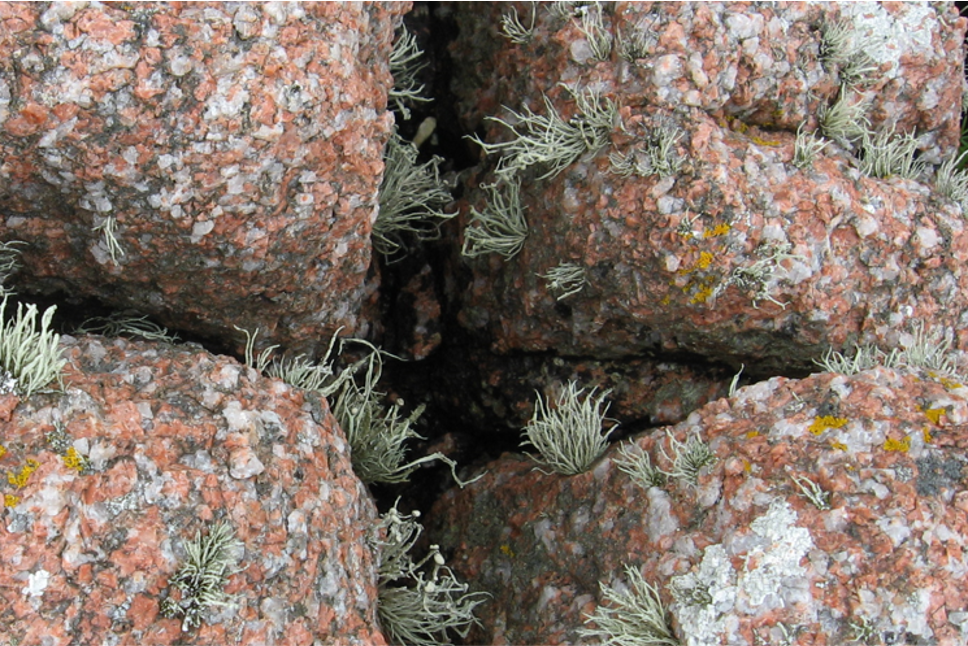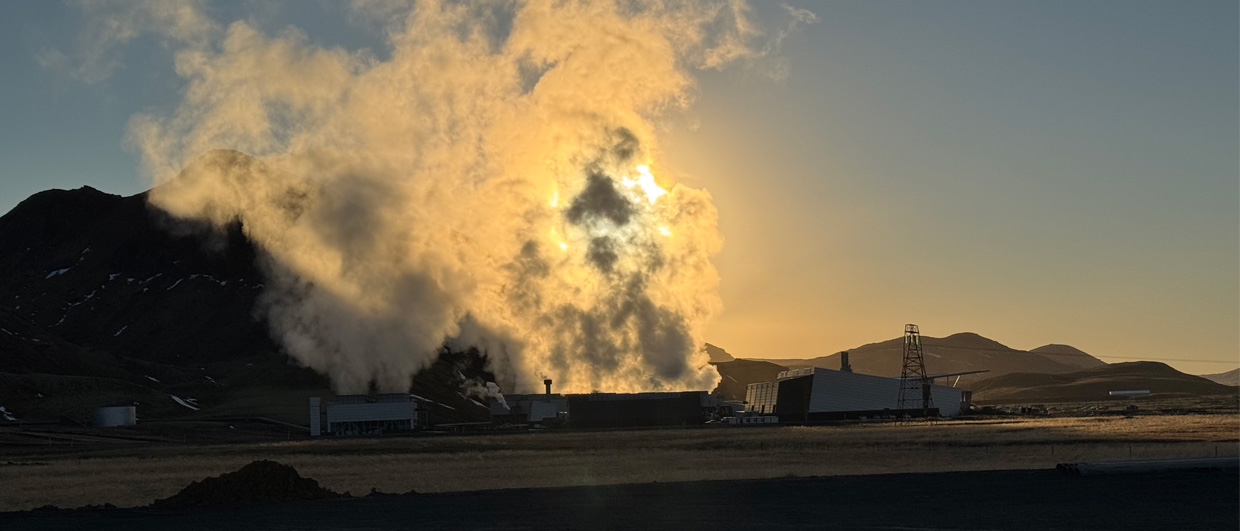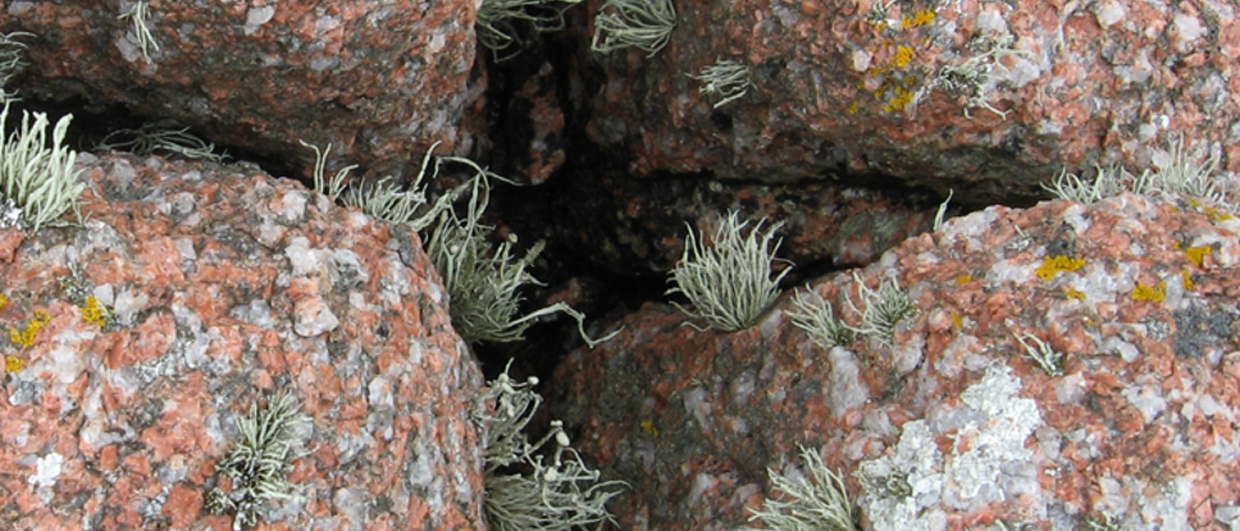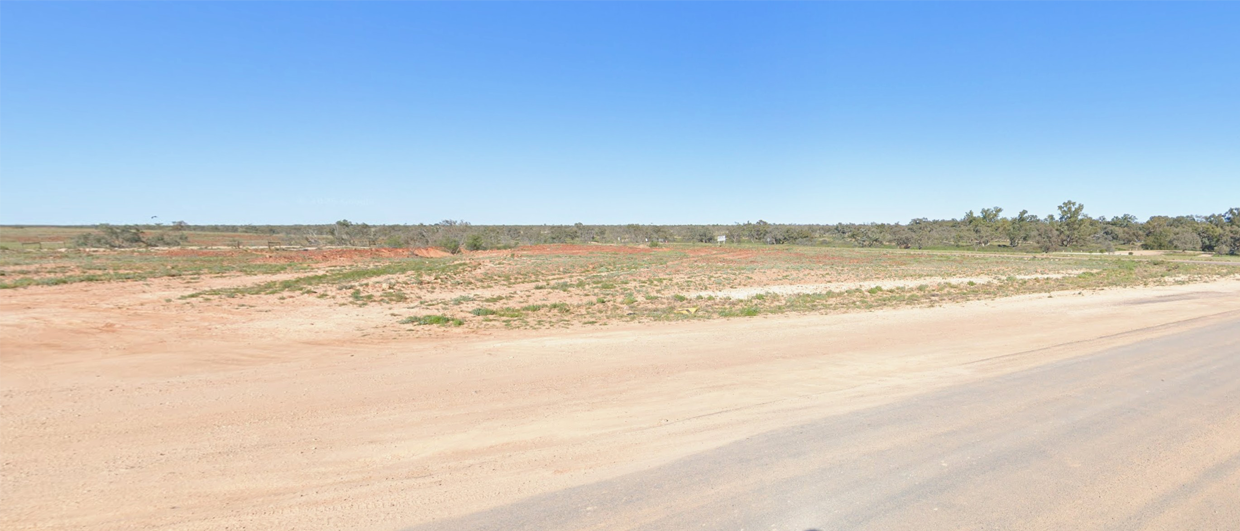Twenty years ago, Australia saw the start of a big geothermal project in deeply buried basement rocks. Situated in the Cooper Basin, the project included several phases of production testing and stimulation, but commercial operations never took off. The plant ultimately closed in 2015 after drilling of six deep wells.
However, the data acquired during the several phases of injection and production continue to be one of the largest and best data sets, both with regard to the geological setting as well as the induced seismic events that took place during and after operations.
Today, as geothermal energy production is being increasingly looked at to decrease dependency on fossil fuels, there is a number of projects planned or in development where geothermal energy is also being extracted from basement rocks. The United Downs and Eden project in Cornwall in the UK are just two examples, both of which aim to produce hot water from a fault zone at comparable depths (> 4 km) as the project in Australia. For that reason, the learnings from the Cooper Basin project are worth being analysed until today.
More than 75,000 induced seismic events
The initial objective of the Enhanced Geothermal System in the Cooper Basin was to generate more than 100 MW from a number of production and injection pairs completed into the granitic basement, with the deepest well reaching a depth of 4850 m. Four wells were clustered in the so-called Habanero area, while the two other wells are located further away (Jolokia and Savina).
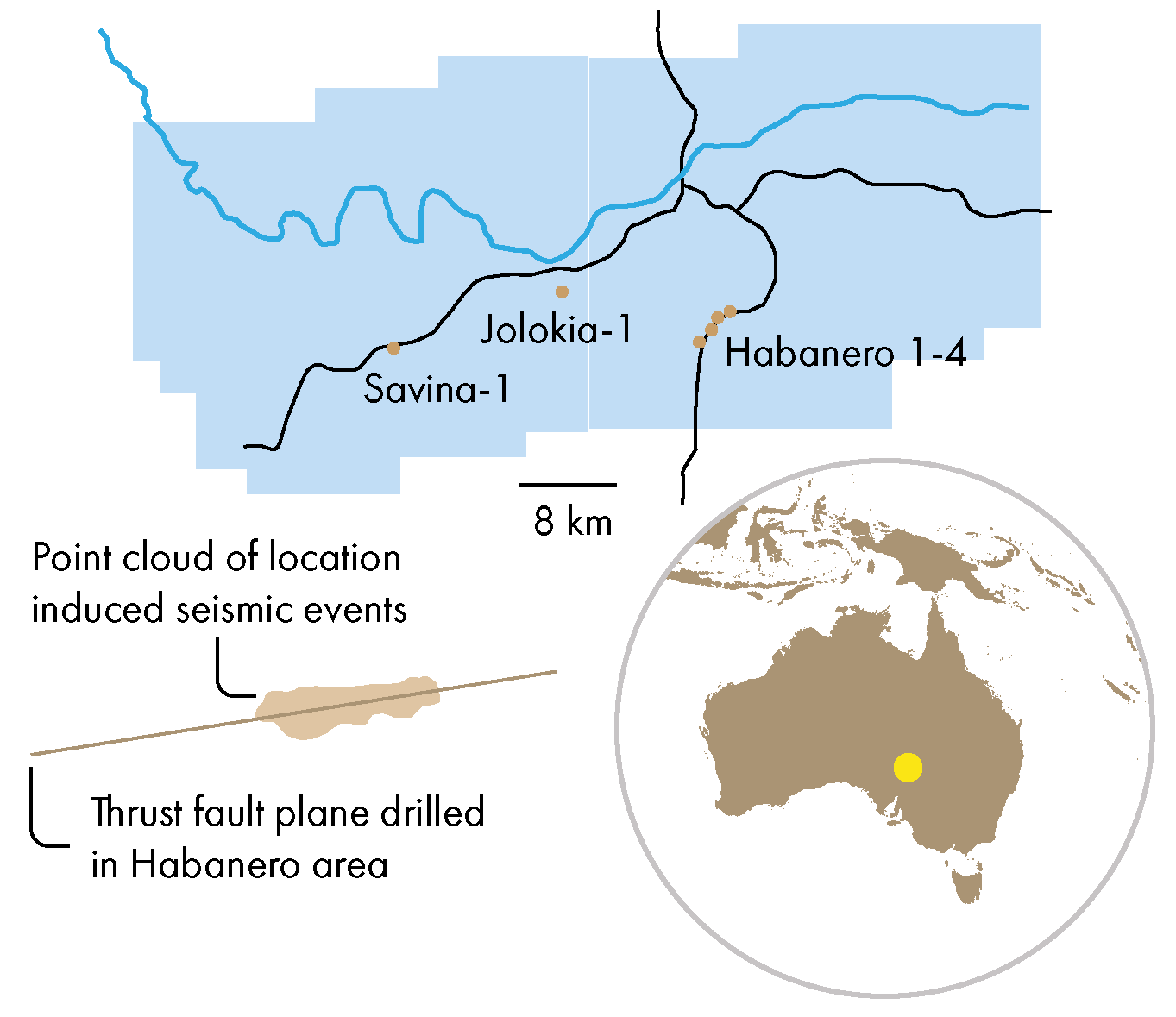
Between 2003 and 2012, several phases of hydraulic stimulation took place, with an array of geophones monitoring induced seismic events. The analysis of these events shed some interesting light on the nature of the granitic basement, with the a clear difference observed between the Habanero and Jolokia wells. The Savina well was abandoned due to borehole problems.
Following definition of the hypocentre locations of the seismic events observed in association with the Habanero well tests, they all lined up along a slightly dipping plane (see above). Subsequent drilling and coring confirmed that a sub-horizontal thrust fault dissects the granitic basement in the area. It also appeared that induced seismic events, which varied in magnitude between 1.6 and 3, radiated away from the wells over time up to around 1000 m away from the wellbore. Researchers also observed that due to the induced earthquakes, stress redistribution within the fault zone took place towards the periphery of the reservoir. This has the potential to trigger larger magnitude earthquakes if the fault is critically stressed.
In contrast to the experience at Habanero, testing the Jolokia well resulted in hardly any fluid injection, and very little induced seismic activity was detected.
Faulted basement only
The main conclusion from these tests in the Cooper Basin is that unless a fractured zone – in this case the thrust fault – is present in granitic basement, the rocks cannot be considered a reservoir because they are impermeable. It is also interesting to note that it was the analysis of the induced seismic events that helped locate and map the geometry of the thrust fault, as this is the only structure in the basement that shows enhanced permeability.
Based on these findings, the field development plan had to be significantly revised downwards in terms of expected energy extraction, mainly because it was the fault zone only that promised to be capable of bringing water to surface.
This article is partly based on findings published by Stefan Baisch and Robert Vörös from Q-con.

